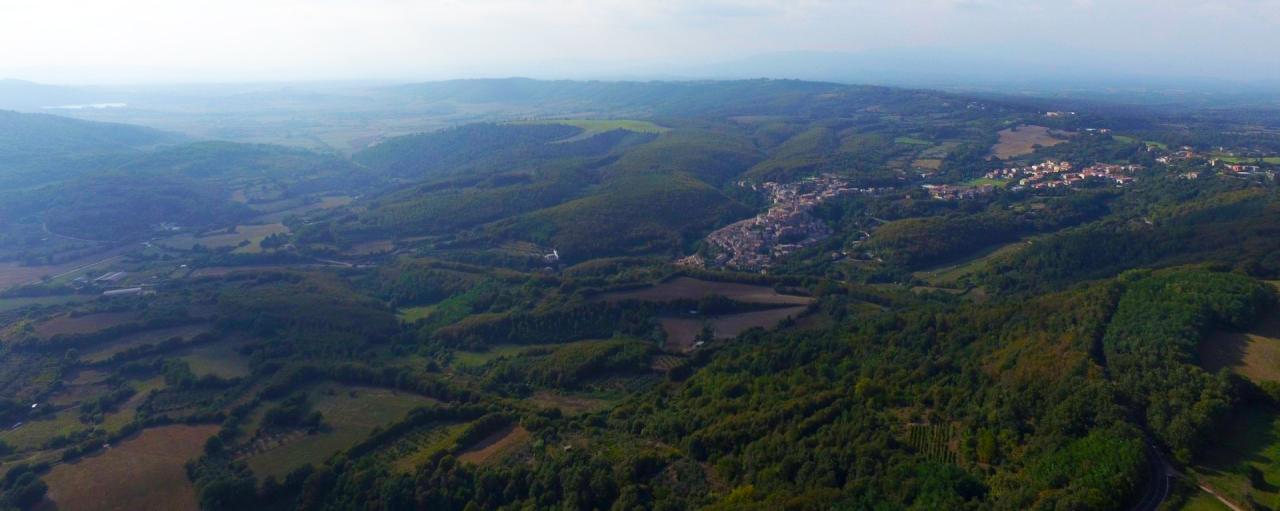It is an elliptical-shaped depression, whose major axis is almost nine kilometres long and whose margins rise to almost 200 m above the level of the flat bottom on average.
Originating as a result of repeated volcanic eruptions some 200,000 years ago, it was later occupied by the waters of a lake. The stink, which gives this locality its name, is a residual manifestations of volcanic activity consisting of gas and vapour emissions containing hydrogen sulfide.
Caldera is a Portuguese word that has entered worldwide volcanological terminology. Following extremely violent eruptions, in the course of which enormous quantities of pyroclastic materials are erupted, the volcanic apparatus which is already partly demolished, undergoes a sinking. The depression that forms is mostly circular and is called a caldera. The Latera caldera has several clearly recognizable craters, with four concentric belts testifying to four different eruptive phases.
The caldera is not only of landscape and geological value. The unique characteristics of its environment and local biodiversity have earned it recognition for inclusion in the Lazio lists of both Sic (Sites of Community Importance) and Zps (Special Protected Areas). In particular, the birdlife is the most interesting component of the local animal population. Prominent species reported include birds of prey characteristic of open environments such as the hen harrier, the black kite and the Eurasian hobby. More discrete, but no less important, are the presence of several sparrows that regularly visit steppe areas, such as the calandra lark, ortolan and quail. Among the reptiles, the common tortoise is reported.

